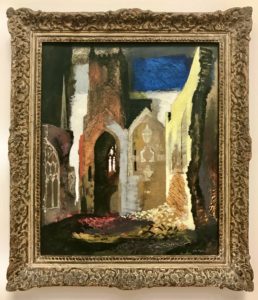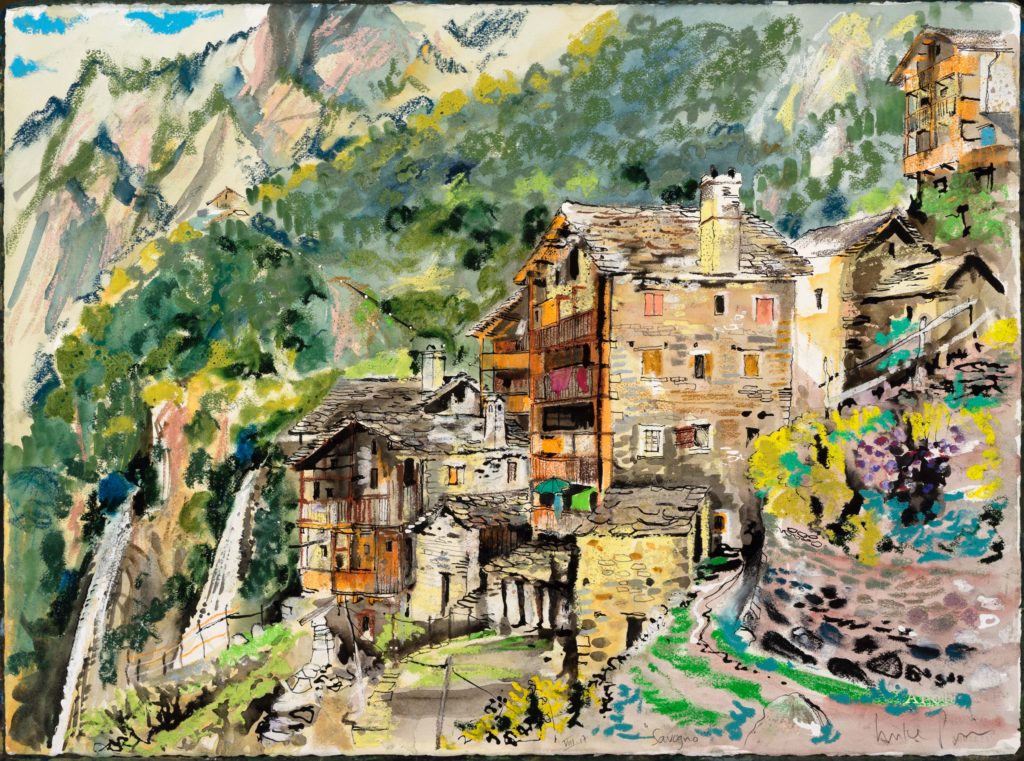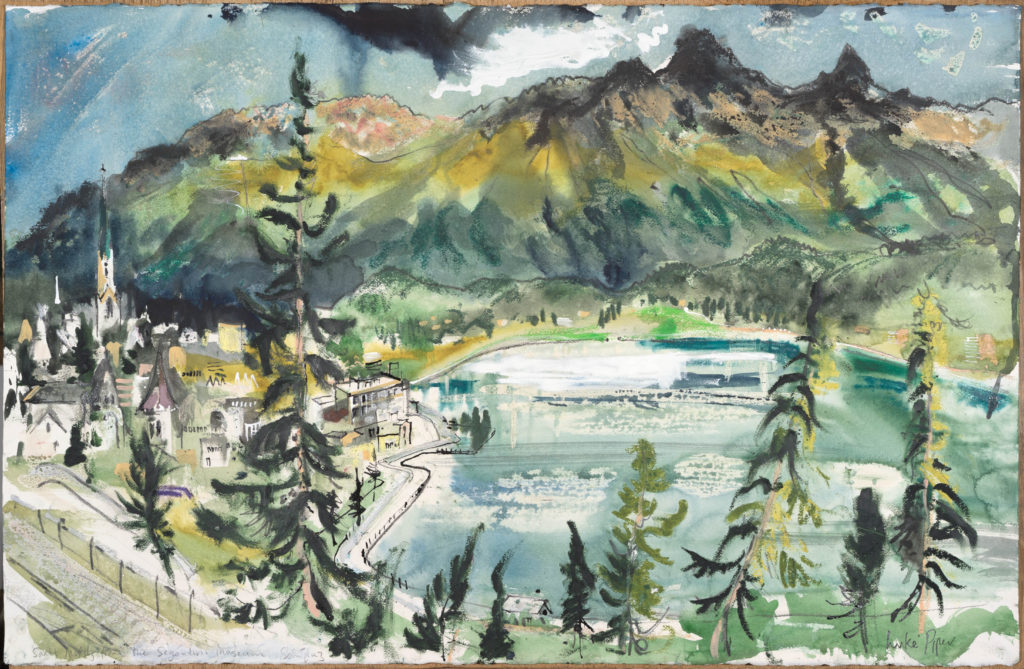News
Reflecting on Luke Piper’s Legacy

There is no better feeling than strolling around the museum and encountering a work that you have a personal connection to. I had just been admiring a painting of a seemingly sturdy as well as fragile church that played with subtle light and intricate colours, conjuring an eerie mood. Then, the signature “John Piper” caught my eye. I turned to my friend next to me and exclaimed quietly, “Oh, look I know this artist,” to which she checked the date 1903-1992 and said, “You know that he died before you were born?” Her initial assessment was fair enough, but then I got a chance to explain that I had exhibited his grandson’s work in the Central Art Gallery in St. Moritz.
Investigating John Piper’s oil and graphite painting “St Mary le Port, Bristol” (1940) in the Tate Britain, I could see where his grandson, Luke, learned how to play with the different hues of vibrancy and intensities of light. John’s art work belongs to a series of paintings that concentrated on bombed buildings, focusing especially on damaged or destroyed churches. This particular church was hit in the attacks on the Bristol Docks in the November of 1940.
Just like this painting depicts, John concentrated on churches and monuments since he was an official war artists of World War II, making “Piper” a household name. Indeed, John’s legacy carries on in several prestigious galleries and museums all over the world. The Art Institute of Chicago, the Victoria & Albert Museum and Tate Britain are only a few examples. Next to being a painter, John was also a printmaker and designed stained-glass windows for opera and theatre sets. It must have been his craft relating to stained-glass windows where he picked up the vibrancy for colours that his son, Edward, as well as grandson, Luke, had picked up on. However, John was not the only point of connection to the art world; his wife, Myfanwy, was a significant player in the abstract art movement throughout the 1930’s and had legendary friends such as Alexander Calder or Henry Moore.

Similar to how my father and I have turned our gallery work into a family endeavour, the three Piper generations have shared major painting shows. Edward was also a marvellous artist and had the opportunity of exhibiting his works until his untimely death in 1990 at the age of 51. Nevertheless, Luke’s first major painting show was in 1992 at the CCA Dover Street Gallery in London where he shared the space with his father and grandfather. And the train of artists does not end here; Luke’s daughter, Lilith de Salis Piper, is the next in line to carry on this incredible legacy.
Reflecting on John and Edward’s works, the narrative of where Luke’s technique, influence and inspiration stem from becomes increasingly clear. Luke read geography at Cambridge University where he took the opportunity to study tribal warfare in Melanesia. It was during this anthropological assignment that Luke’s focus on the physical aspects of our landscape has become a prominent concentration in his art works. Piper is married to Julia de Salis, which lead him to Bondo and finally to his works that concentrated on the Engadin and its surroundings. His geography degree came in very handy when exploring the different facets of nature as “the journeys we take in the Engadin are about the character of places that comes from not just the geology and underlying strata but also the unseen magic that is beyond the pure physical appearance of a place.” This particular series of Luke’s works were truly masterful, and we felt incredibly lucky that we could exhibit them in our gallery – it was a true honour.

The Piper and de Salis Exhibition was a complete joy for me and my father, and we continue to follow Luke’s new works, which never fail to enchant, inspire and trigger conversation.
Link to our Exhibition Archive with Luke: https://galeriecentral.ch/en/ausstellungen/luke-piper/
Link to his homepage: http://www.lukepiper.com
